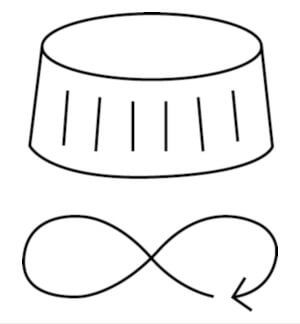The operating principles and types of automatic capping machines
These days, a great number of products are placed in containers with screw caps. These include food and beverages as well as cosmetics, cleaning supplies and medications. There are now many different types of containers with screw caps due to the wide variety of goods and industries. Automatic capping machines are used in filling lines for quick and simple closure.
An automatic capping machine significantly increases the efficiency of the production line. Additionally, it eliminates the need for the operator to do the tiresome task of closing each packaging separately. The machine boasts high speed and simplicity of use.
At Unilogo, you are sure to find a machine that satisfies the process requirements for your product, whether what you need is an automatic bottle jar machine or an automatic bottle capping machine.
The basic principle of an automatic capper is simple: it automatically seals containers so that the liquid product inside is protected against spilling. An automatic capping machine can either apply and tighten all kinds of caps, or only tighten those caps that have already been applied in the production process.
There are two main types of devices that automatically place caps on containers. The first one is an automatic capping machine, which uses a special chute or feeder to transport the caps one by one to the tightening station. The cap is then lowered and tightened to the container.
The so-called pick-and-place system is the second kind of cap feeding system. This is a two- or three-axis manipulator that takes the caps out of a special hopper, places them on the container, and then tightens them. Because the manipulator can follow a moving bottle or jar on the conveyor and screw on the cap as they advance, an automatic capping machine using this feeding system enables non-stop capping without containers stopping on the line.
Depending on the kind of packaging and caps you use, you can choose from a variety of cap feeding systems for your automatic capping machine. Automatic capping machines can be used with trigger nozzles, all kinds of dispensers, flip-flop and twist-off caps, as well as standard caps.
Automatic cappers also have different mechanical system used to automatically seal containers. There are two tightening options: a special handle that grips and tightens caps and a set of spinning discs that are applied to the cap and cause it to rotate.
The first type, the automatic capping machine, uses a special gripper to catch the caps and tighten them on the packaging. The arm on which it is placed is lowered onto the packaging and then sets the gripper in motion, thus tightening the container cap.
This type of capping machine comes in both fully automatic and semi-automatic machines. The amount of human interaction needed to operate an automatic capping machine is minimal. Actually, it is limited to merely replenishing the caps already taken by the machine.
Human involvement is much higher with semi-automatic machines. Machines of this type can tighten caps that the machine operators have already placed on the packaging. Of course, they improve overall production efficiency, but they are not as autonomous as an automatic capping machine.
Similar distinctions apply to capping equipment that uses powered discs to seal the containers with screw caps. When using a semi-automatic device, the operator places the cap on the container; which is then tightened by the machine.
These fully automatic cappers have a cap application and feeding system that often consists of a vibrating feeder or conveyor that collects the caps from a hopper. Once the machine has placed a cap onto the packaging, a torque is applied to the cap by means of a wheel that presses it. Next, the cap is screwed on.
Application of automatic capping machines
Any bottling line must include an automatic capping machine. This kind of machinery is typically used at the final stage of production. The bottling of water or other beverages and the food industry are the two main uses for bottling lines. However, capping machines are relied upon in many other industries where a liquid product is packaged with a screw cap before being tightly sealed.
One of the biggest markets for automatic capping machines is the cosmetics industry. A significant portion of the products in this sector are placed in packaging with a screw cap, including shampoos, perfumes, soaps and various cleaning products.
An automatic capping machine is a common sight in food and beverage plants, that is in the food industry. Food producers frequently distribute their goods in packaging with screw caps. This applies not only to liquids, but also to everything that usually goes into jars, including preserves and canned goods.
Other industries that are not unfamiliar with the automatic capping machine include the chemical and agricultural sectors. In these sectors, goods are frequently packed in containers with screw caps that must be automatically closed not to leak their contents in order to ensure safe transport and use of the substance.
The pharmaceutical industry makes extensive use of the automatic capping machine. Packaging with screw caps is used for products like syrups, drops and capsules. The industry often requires that the packaging be sealed after it has been filled in such a way that the customer can be sure that no one has opened it after it has left the production line. Automatic capping machines made for such production plants are also equipped with this feature.
Automatic capping machines – trust Unilogo!
Unilogo has been offering premium packaging capping solutions for many years. Our automatic capping machines help you boost productivity on any bottling line while upholding all production standards and minimising the number of packages rejected due to incorrect capping.
We offer both universal machines, which are easily adaptable to almost any type of packaging and cap, and strictly customised machines designed to produce one specific kind of product. Both jaw-style capping machines and those that tighten the caps with a powered, spinning disc are among our standard products.
Our automatic cappers are used in a wide variety of industries and sectors. The satisfaction and trust of our loyal customers is proof of their high quality. If our selection of capping machines does not contain a device suited to your product, we encourage you to submit a thorough inquiry so that our team of experts can create a solution that satisfies your needs.

Z9 CAPPING MACHINE
An efficient and universal machine for semi-automatic, continuous capping of packages during production (non-stop workflow).
Z9 CAPPING MACHINE
- One or two servo-driven continuous heads.
- Non-stop working mode – capping during constant flow of packages.
- Capping with back-turn which increases production capacity and eliminates rejected packages.
- Possibility of also applying an automatic cap sorter.

Z6 CAPPING MACHINE
Machine for automatic feeding and capping of triggers, cosmetic pumps (and traditional caps).
Z6 CAPPING MACHINE
- An automatic closing machine for caps as triggers, pumps and traditional caps.
- Capping options: at an angle, for a torque set, with a back-turn
- Universal use – an exchangeable head and format pucks – work with any cap and package type.

Z5 CAPPING MACHINE
Z5 CAPPING MACHINE
- Universal application – capping machines serve ANY type of closure and package.
- Precise capping force, number of revolutions and head rotation speed.
- Adjusted head setting angle.
- Fast and easy change of settings and formats into capping a new product.

Z2 CAPPING MACHINE
Z2 capping machine (pick&place) – one or two servo-driven capping heads with special jaw grippers, which automatically take caps from a tray.
Z2 CAPPING MACHINE
- Capping round caps with a thread.
- One or two capping heads (gripper or shape head)
- Any type of package
- Precision of capping – controlled by servo-drives

